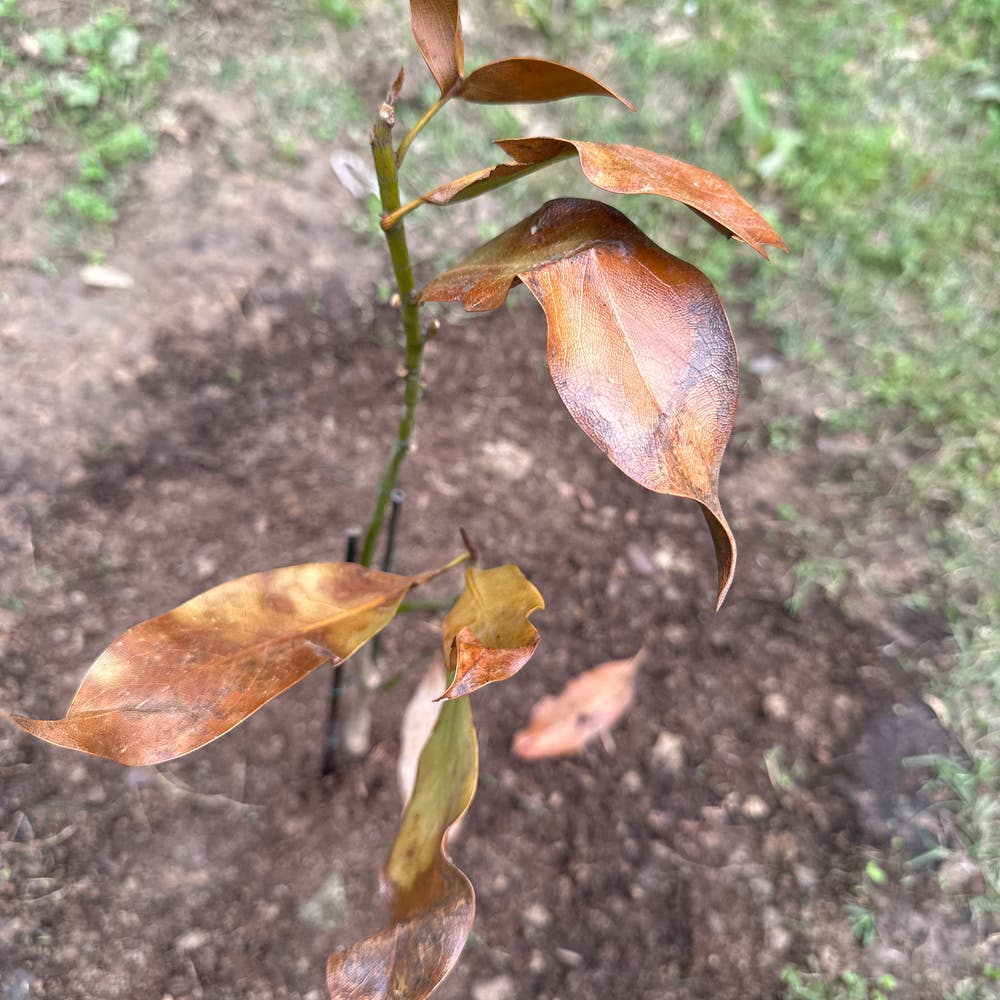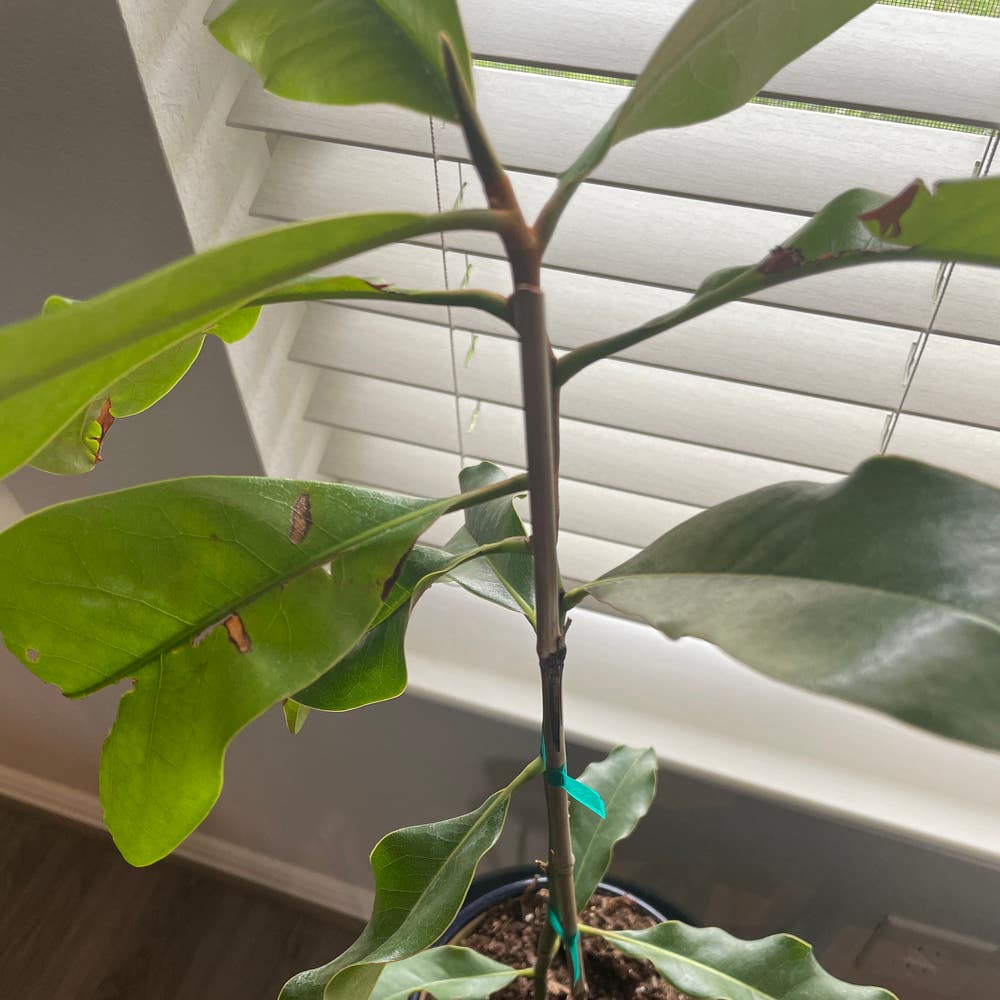Why Are There Brown Spots on My Southern Magnolia Leaves? 🐛
Jan 12, 2024•5 min read
Solve the mystery of brown spots on your Magnolia 🍂 and keep your tree's leaves spotlessly green! 🌿
- Fungal and bacterial infections often cause brown spots on magnolia leaves.
- Environmental stress signals like sunlight or temperature extremes contribute to leaf browning.
- Prevent with proper care: prune, water correctly, and manage soil for tree health.
Spotting the Trouble: Recognizing Brown Spots
🍂 Visual Symptoms
Southern Magnolia trees, with their glossy, dark green leaves, are not immune to the blemish of brown spots. These spots vary in appearance, from rusty patches suggesting nutrient deficiencies to circular lesions that scream fungal or bacterial infections. A spot's texture can be dry or have a water-soaked look, sometimes flaunting a yellow halo like an unwanted crown.
🌱 Patterns of Spread
Observing the spread of brown spots is key to diagnosing your Southern Magnolia's ailment. Are the spots isolated to one area or do they seem to be on a conquest, spreading across the leaf surface? The pattern of these spots—whether they're concentrated at the tips, boldly staking claim in the center, or scattered like a rogue's gallery of blotches—can reveal the nature of the threat. Keep a vigilant eye on new growth; healthy, spot-free leaves are a sign of recovery, while the persistence of old spots or the emergence of new ones calls for a reassessment of your tree's care.
Rooting Out the Causes
🍄 Fungal Foes
Fungal infections are the cloak-and-dagger operatives in the plant world, often leaving brown spots as their signature. Cercospora and Phyllosticta are common fungal culprits that target Southern Magnolia leaves. Look for spots with a colorful halo, usually red or yellow, which is a classic sign of fungal activity. These fungi thrive in conditions of high humidity and poor air circulation, so check if your tree is in a spot that's too cozy for its own good.
🦠 Bacterial Bullies
Bacterial infections can be just as stealthy, with Pseudomonas leaf spot being a notorious offender. This bacteria loves to throw a party on your plant's leaves in high humidity and stagnant air. The spots from bacterial infections might appear water-soaked or ooze a sticky substance, and they can spread rapidly if not addressed.
🌿 Environmental Stress Signals
Environmental stress is like the subtle background music that sets the tone for plant health. Too much sun or extreme temperatures can cause brown spots as a plant's distress signal. Check if your Southern Magnolia is getting consistent light and isn't subject to temperature swings. Also, ensure the soil pH is balanced; an imbalance can block nutrient uptake, leading to deficiency symptoms like brown spots. Remember, brown spots can also be the plant's SOS for overwatering or poor drainage, so feel the soil to make sure it's not too soggy.
Crafting the Cure: Treatment Strategies
🍄 Battling Fungi and Bacteria
Fungal infections in Southern Magnolias require immediate action. Begin by removing any affected leaves to prevent further spread. Fungicides are the next line of defense; choose a product compatible with your tree and apply according to the label's instructions. Remember, thorough coverage is crucial—treat every leaf, top and bottom.
For bacterial issues, copper-based bactericides can be effective. However, they're not universal fixes, so ensure the chosen treatment is right for your tree's specific ailment. In severe cases, antibiotics like streptomycin may be necessary, but use them judiciously to prevent antibiotic resistance.
🌿 Adjusting the Environment
Environmental tweaks can stave off future brown spots. Air circulation is key; prune your tree to allow air to flow freely through the branches. This helps to keep the foliage dry and less hospitable to pathogens. Additionally, ensure your magnolia isn't overwatered—soggy soil is a fungal playground.
Sunlight is nature's disinfectant. Position your Southern Magnolia where it can bask in ample light without scorching the leaves. If relocation isn't an option, consider thinning out surrounding vegetation to reduce shade. Remember, a healthy tree is less susceptible to diseases, so keep up with regular feeding and care.
Keeping the Green: Prevention and Ongoing Care
🌿 Cultural Practices
Consistency is your Southern Magnolia's best friend. Like a well-oiled machine, your tree thrives on routine care. Prune wisely; it's not just a haircut, it's a strategic move to prevent fungal invasions. Fallen leaves? Get rid of them. They're not a leafy blanket; they're a fungal party waiting to happen.
Watering is an art—too much, and you're drowning the roots, too little, and you're parching them. Let the soil be your guide, not the calendar. Soil management is crucial. Ensure good drainage to avoid waterlogged roots that scream "come and get me" to fungi.
Plant selection matters. Choose varieties that laugh in the face of fungi. If you've got a plant that's prone to brown spots, it's like choosing a pet that sheds on your black couch—prepare for extra work.
👀 Regular Monitoring
Keep an eye on your magnolia like a hawk. Early detection can mean the difference between a quick fix and a tree tragedy. Log the plant's condition; it's not just a diary, it's a detective's notebook. Notice a change? Act fast. It's not being paranoid; it's being proactive.
Integrated Pest Management (IPM) isn't just a fancy term; it's your game plan. It's about being the plant's bodyguard, using the least force necessary to keep pests and diseases at bay. Think of it as a chess game with nature—stay sharp, stay ahead.
Remember, prevention isn't just a one-off; it's an ongoing commitment. Like brushing your teeth to avoid cavities, regular care avoids brown spots. Keep at it, and your Southern Magnolia will stand tall and proud, spot-free.


